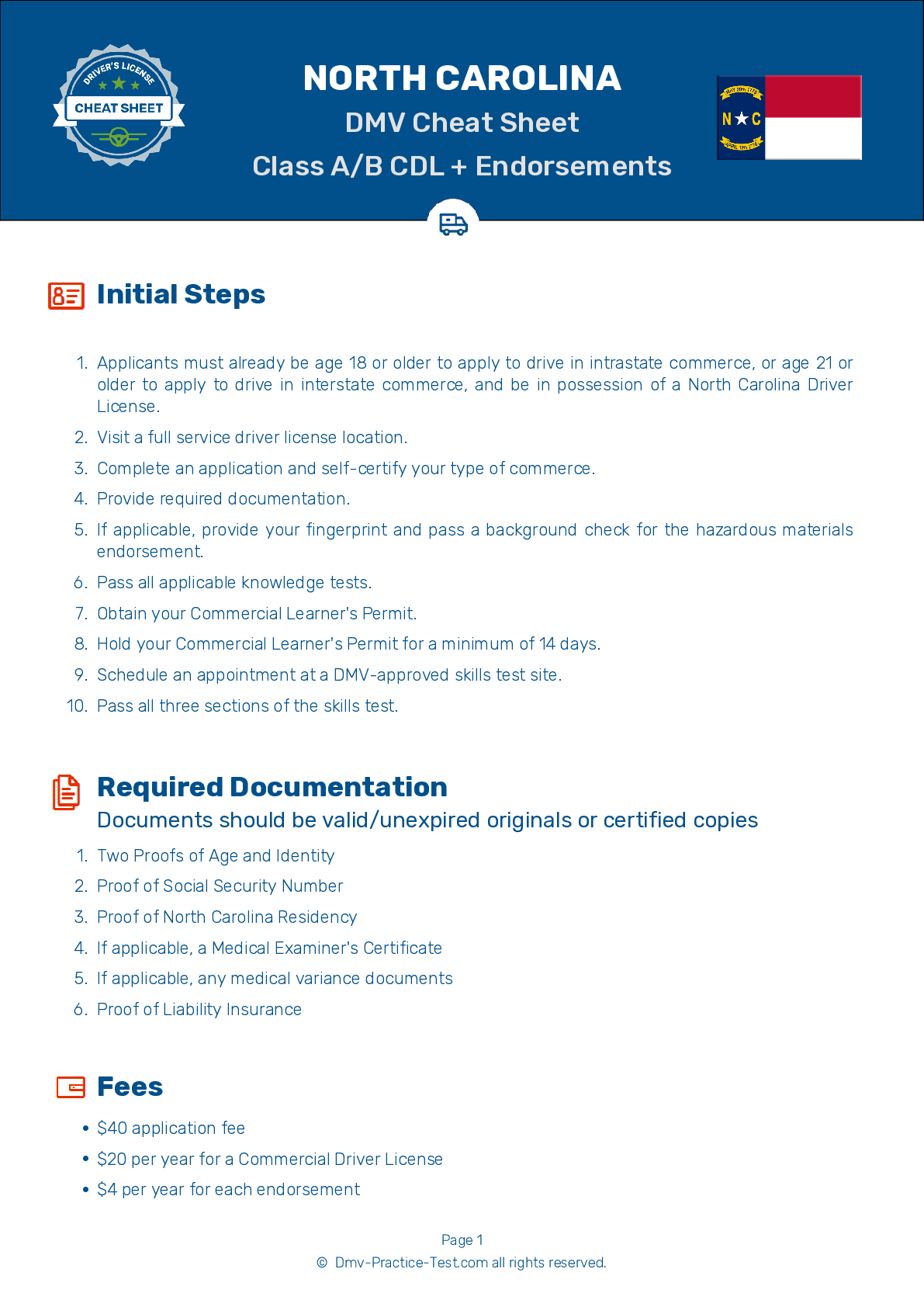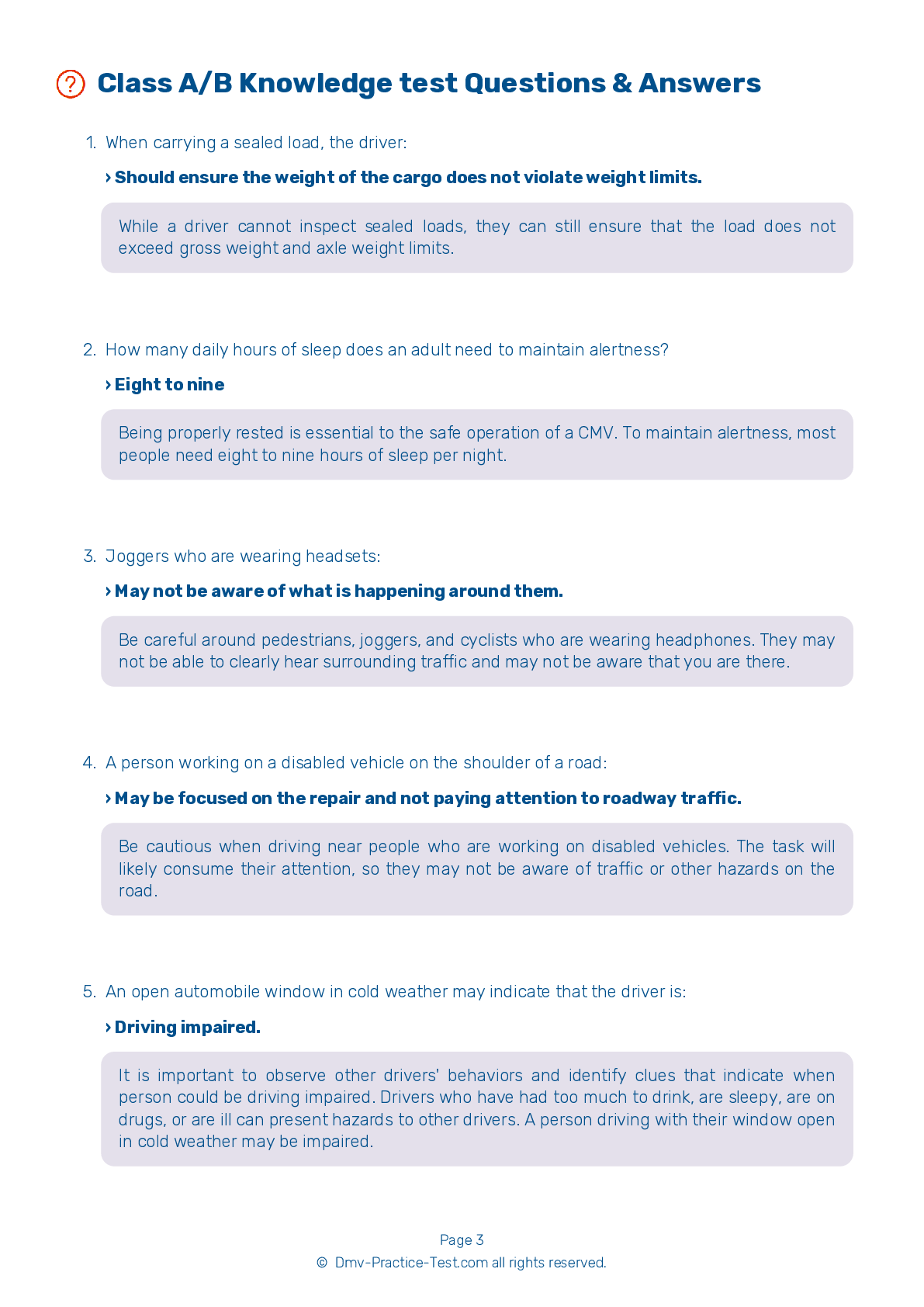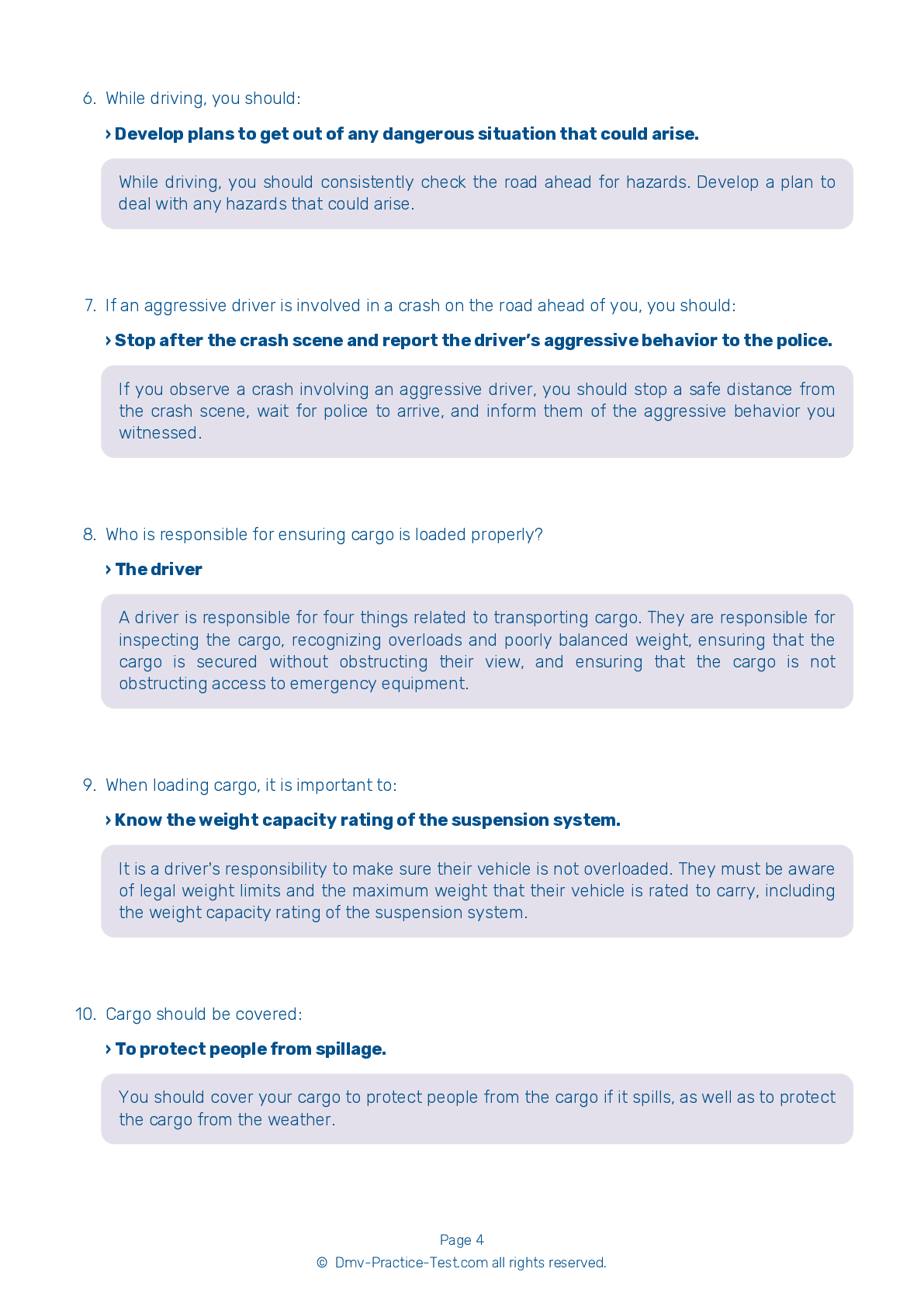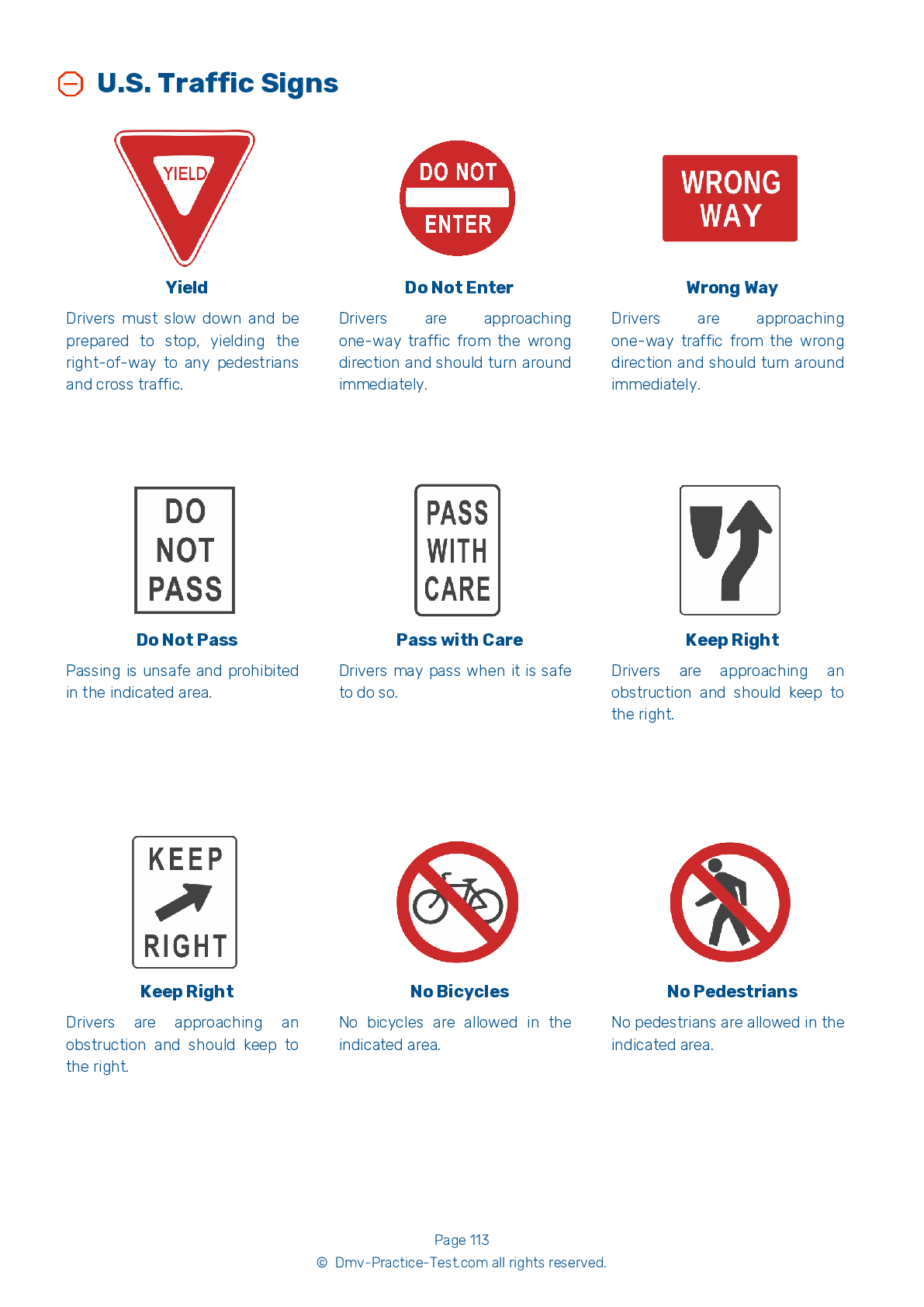Class B Driving Test | North Carolina 2025 #2 Page 6 of 7
Train for FREE online with our North Carolina class B license test. The official exam test consists of several obligatory parts, with all of them checking your knowledge of different blocks of road rules. If you need to obtain a NC CDL class B permit in 2025, practice as much as possible. Free sample tests published on our website will help you check and improve your knowledge and boost your grades. Please bear in mind that CDL class B requirements may vary from state to state.
36 . Why are multi-speed axles and auxiliary transmissions used?
On many vehicles, multi-speed rear axles and auxiliary transmissions are used to provide extra gears.
37 . Poisonous fumes can enter the cab due to:
Defects in an exhaust system are very dangerous because they can cause poisonous fumes to enter the cab or sleeper berth.
38 . Placards should be used:
Placards must be placed on the outside of vehicles carrying hazardous materials. They identify the specific class or classes of materials being carried and warn others of relevant hazards.
39 . How should you check your hydraulic brakes?
To test hydraulic brakes, you should pump the brake pedal three times, then apply firm pressure to the brake pedal and hold for five seconds. The pedal should not move. If it does, there may be a leak.
40 . If you are confronted by an aggressive driver, you should:
If confronted by an aggressive driver, the most important thing for you to do is get out of their way. Avoid making eye contact, do not challenge them by increasing your speed, and do not let yourself be provoked by any angry gestures they direct toward you.
41 . If a truck is equipped, a trailer brake hand valve can be used to:
If a tractor-trailer is so equipped, the trailer brake hand valve can be used to stop the vehicle from rolling back when being started from a stop.
42 . Drivers are usually the least alert:
Drivers are usually less alert when driving at night, especially after midnight.
See the exact questions that will be on the 2025 North Carolina DMV exam.
99.2% of people who use the cheat sheet pass the FIRST TIME
Lillian MCcranie explains how our CDL study guide was helpful in passing the exam and recommends it to everyone.
Cameron tells us how he purchased the CDL exam, and found it to be a useful tool which helped him pass the exam and find a job.



